In addition to stockpiling emergency food, many preppers are seriously considering starting a seed bank.
The idea is that you will be able to grow food for your family, even in the worst circumstances and when the supermarket shelves are empty.
There are a lot of “survival seed” kits available – but don’t rush off and buy one until you read this first!
Why Start a Seed Bank?
The main reason people start a seed bank is to have food security if a disaster strikes. There is only so much emergency food you can stockpile (I’d recommend a 30-day stockpile at a minimum).
What happens when the emergency food runs out? You’ll need to start growing your own. (Read about how many vegetables to plant for a year’s supply of food.)
Another reason some people stock survival seeds is that they are worried that the government or corporations will do away with non-GMO heirloom seeds. If Monsanto had their way, for example, we’d only have access to their GMO seeds.
I personally am not worried about this last scenario. However, if corporations did take control of all crops, it would be nice to know that I have a stockpile of heirloom seeds to grow food for my family.
It’s a small but potent way of rebelling!
Is a Seed Bank Worth It?
My main problem with survival seed kits is that they give people a false sense of security. If you have never gardened before, you can’t realistically expect to start producing all your own food quickly.
Gardening takes a lot of skill – and gardening during disaster situations will be even more challenging.
For More About Producing Your Own Food: Producing Food Overview
Before you start your seed bank, consider:
- How much knowledge do you have about gardening?
- Do you have a secure place for your survival garden?
- Is the soil suitable for growing?
- How will you water your garden?
- What gardening tools do you have?
- How will you keep your survival garden secret?
The Best Time to Start Is Now
Don’t wait until a disaster strikes to test out your gardening skills.
Recommended Reading:
Not only is gardening a great activity that provides healthy food for your family, but it increases your self-reliance.
For disaster prep, you’ll learn what plants thrive best in your area and be better able to plan your seed bank.
What Seeds to Choose?
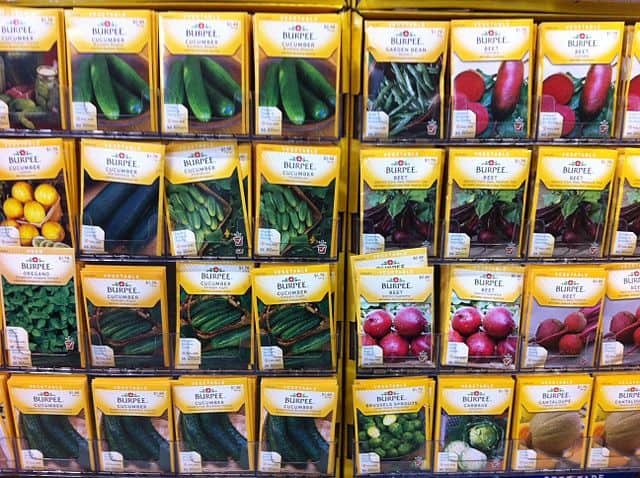
I was tempted to give a list of the “best” seeds for a survival garden. However, there are no best choices. It depends too much on where you live, the amount of space you have, and how you will be gardening.
Instead, choose seeds for your seed bank based on these characteristics:
1. Open Pollinated
Open pollinated simply means that the plants can be pollinated by natural methods such as wind, birds, rain, bats, or insects. Some open-pollinated plants will even pollinate themselves.
So long as you don’t allow the plant’s pollen to mix with other related species (such as by keeping an adequate distance between two varieties of tomatoes in your garden), the plants will remain true year after year.
Note that all heirloom plants are open-pollinated, but not all open-pollinated plants are heirloom.
2. Non-Hybrid
Hybrid seeds (designated by the F1 label) are made by combining two different strains of plant together. The resulting plant has the good characteristics of each plant, making them hardier and easier to grow.
The problem with hybrid plants is that they are a “one-hit wonder.” The seeds they produce are often sterile.
If the resulting seeds aren’t sterile, you don’t necessarily know what you will get. You end up getting offspring that are completely different than the parent.
These hybrid offspring are often very disappointing. It is better to stick with non-hybrid seeds for your seed bank – you’ll be able to collect the resulting seeds and know exactly what you’ll get from them.
3. Non-GMO
GMO seeds are a completely different thing than hybrids. Where hybrids cross two related plants, GMOs use lab methods to cross completely different species – like adding fish genes to a tomato plant.
There is a lot of debate about the health and safety of GMO plants. For your survival seed bank, you need to know that plants grown from GMO seeds are usually sterile – you won’t be able to collect seeds from them for future crops.
Another issue with GMO plants is that they can cross-breed with your non-GMO plants, resulting in strange hybrids. So, while GMO seeds might grow better, it is safer to stick with non-GMO seeds for your seed bank.
4. Heirloom Seeds
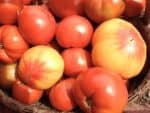
Heirloom varieties of plants have been getting really popular, but few people actually realize what “heirloom” means.
While the definition can vary, an heirloom plant is one that has been passed down through the generations. Each generation of seed was selected for a specific trait.
Some benefits of heirloom seeds include:
- Open-pollinated
- Can save seeds year after year
- Great taste
- Often are good performers
- Higher nutrition
- Locally-adapted varieties available
- Usually don’t ripen all at once – giving you food over a longer period of time
5. Ease of Growing
It doesn’t matter if you’ve got quality heirloom seeds if the plant is difficult to grow! It is really important that you consider whether the seeds are suitable for your area.
For example, carrots can be either very easy or challenging to grow, depending on your soil.
An experienced gardener will know tricks like planting radishes next to the carrots to help keep soil loose. If you aren’t that experienced, you might want to stick to easier plants like green beans.
6. Other Factors to Consider:
- Water requirements
- Nutritional value
- Growing time
- Perennial or biennial
How Long Do Seeds Last?
In theory, seeds could be kept viable for hundreds or even thousands of years in the right conditions – like the Judean date palm, which was grown from a 2,000-year-old ancient seed!
Realistically though, most seeds will last for about 1-3 years if kept in a dry, cool place away from pests.
Most survival seed kits will advertise that their seeds are “guaranteed” for anywhere from 5 to 25 years. They claim to use “special” techniques to promote longevity.
Yes – some of these methods might work (such as sealing seeds in a Mylar bag), but a lot of it is probably just hype.
If you want to learn more about saving seeds, I recommend reading the book Seed to Seed: Seed Saving and Growing Techniques for Vegetable Gardeners by Suzanne Ashworth.
It delves into a lot of great techniques for making seeds last.
Tips for Storing Seeds
- Keep Cool: Heat is an enemy to seeds. Ideally, they should be kept around 40 degrees. If this isn’t possible, choose a consistently cool place to store your seeds, such as in your basement.
- Consistent Temperature: When temperatures fluctuate, it leads to humidity. Avoid storing seeds in places like your garage where temperatures can fluctuate drastically.
- Dry Out the Seeds: You need to ensure your seeds are incredibly dry before packaging them for storage. Some people recommend using a food dehydrator at no more than 90 degrees. You can also use the rice method of drying out seeds.
- Keep Dry: This is incredibly important! You can use moisture absorber packets to keep your seeds dry. For shorter-term storage, you can add some powdered milk to the seed storage containers. The powered milk will absorb moisture and keep it away from your seeds.
- Avoid Light: This is one reason seeds are packaged in paper packets. If you are storing your seeds in jars, they should be keep somewhere dark like your basement.
- Choose the Right Container: Mylar bags are the best choice for storing seeds for the long term. Mason jars are also great choices.
- Use an Oxygen Absorber: Also called desiccants, oxygen absorbers may help seeds last longer.
- Date and Rotate Your Seeds: Make sure you date the seed packages. Hopefully you are already gardening and can rotate through the seeds each year so they stay fresh.
Read: How to store seeds long term
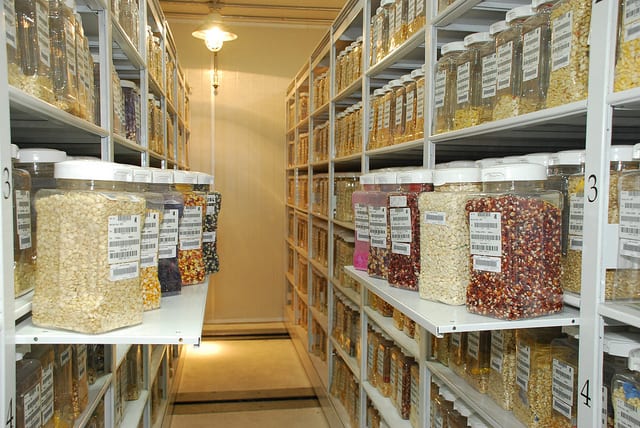
Survival Seed Kits
You can easily make your own seed bank from individual packets of seeds you choose. However, a lot of people prefer the convenience of survival seed kits.
There’s no need to worry about drying the seeds and sealing them in Mylar bags with moisture absorbers.
Many survival seed kits have 20+ varieties of seeds in them. Just be warned that some of these seeds might be completely unsuitable for your climate or situation.
For example, many survival seed banks have watermelon seeds – something that I can’t imagine growing unless your property has a vast water source.
Here are some of the better survival seed kits to consider:
SeedsNow – All-in-One Homestead Seed Bank
25 seeds all of which are separately packaged in Mylar and labeled to keep you organized.
- Non-GMO
- NON-HYBRIDIZED
- High germination
Survival Garden Veg, Fruit and Herb Seed Kit
With this seed bank, you’ll get 30 varieties of plants that have high germination rates.
Most of the plants are easy to grow, though there are a few tougher varieties in there too.
A single package should plant over an acre of food. Note that the seeds are stored in zip-lock bags, which are then in a mylar bag. So, don’t open the kit until you need to use it!
Don’t Rely Solely on Survival Gardens!
We can’t predict what will happen in a disaster. We can only do our best to prepare for every possible situation.
There are too many flaws with survival gardens to rely on them solely (chemicals in the soil, lack of water, crops getting stolen…). If you want real food security, you need to diversify your food plan.
In addition to starting a seed bank for survival gardening, I’d recommend looking into:
Do you have a survival seed bank? How’d you build it?
https://www.naturespath.com/en-us/blog/difference-between-heirlooms-open-pollinated-and-hybrid-organic-seeds/
https://blog.seedsavers.org/blog/open-pollinated-heirloom-and-hybrid-seeds
https://www.foodrenegade.com/hybrid-seeds-vs-gmos/
https://bonnieplants.com/blogs/garden-fundamentals/what-is-an-heirloom-what-is-a-hybrid/

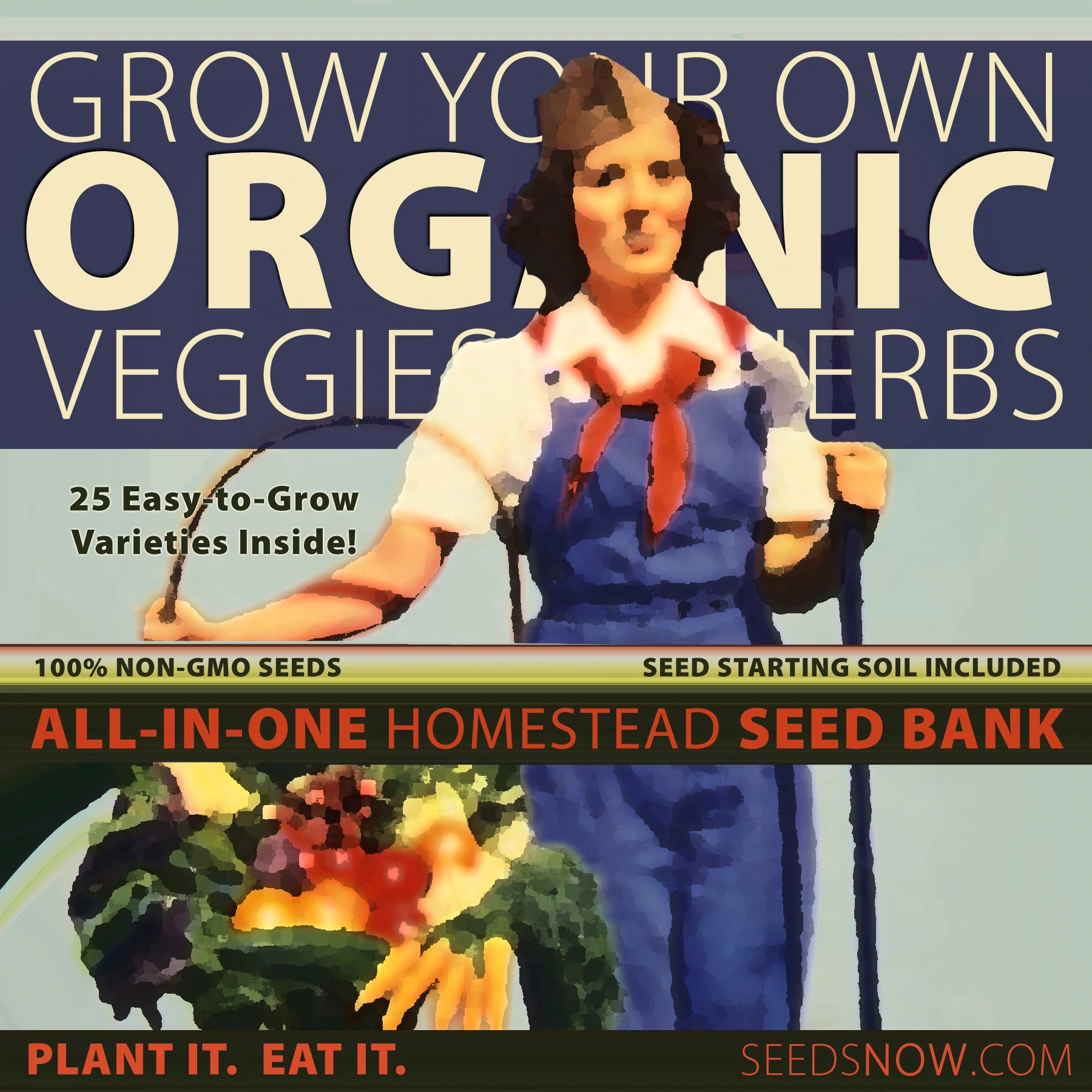
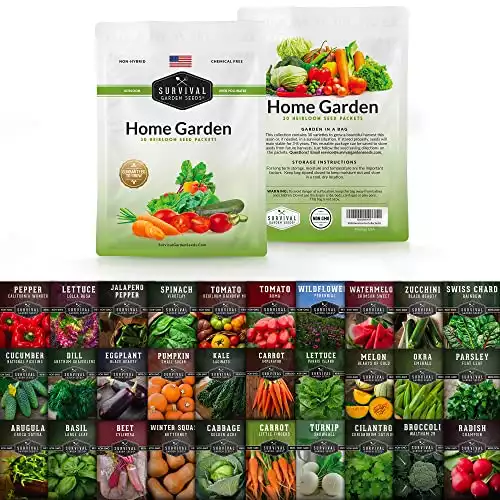


Confused. The Texas Ready Seed Bank classifies N Texas as zones 3-6 but when I googled my zone it said 8A. I am in the Weatherford TX area.